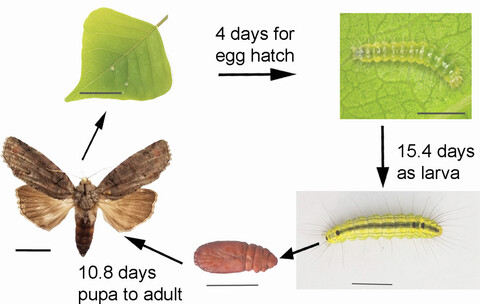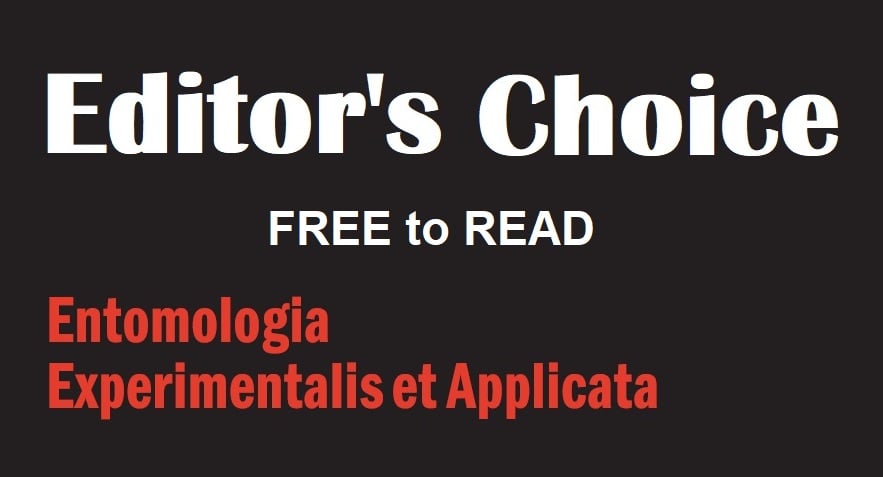Entomologia Experimentalis et Applicata
Journal list menu
Export Citations
Download PDFs
May 2020
Pre-release packing and chilling reduce host-searching ability of the parasitoid Diachasmimorpha longicaudata used in the augmentative control of tephritid flies
- First Published: 04 May 2020
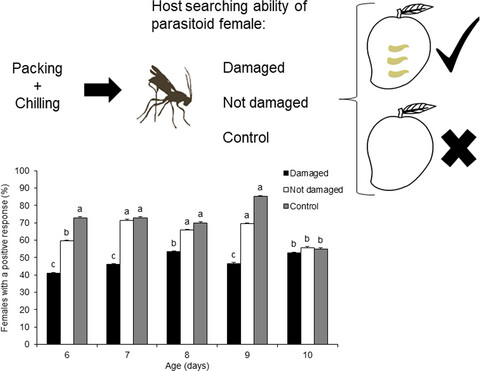
Host-searching ability and fecundity of the tephritid fruit fly parasitoid Diachasmimorpha longicaudata (Hymenoptera: Braconidae) were evaluated, after exposure to pre-release packing and chilling. In an olfactometer, chilled female parasitoids showed a longer response time to infested fruit. After a 24–48 h period, chilled females gradually began to respond in a similar way as control females. We conclude that pre-release chilling reduces female searching ability only for the first 1–2 days after chilling. Chilled females had no reduction in fecundity.
April 2020
Chemical cues from competitors change the oviposition preference of Drosophila suzukii
- First Published: 20 March 2020
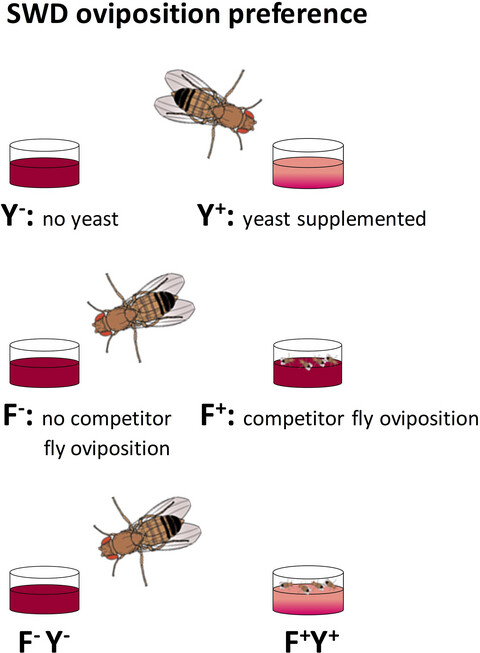
To avoid intra- and interspecific competition, Drosophila suzukii (Diptera: Drosophilidae) may change oviposition preference when competitor flies are present, but the effect of odor cues associated with competitors on the oviposition preference of D. suzukii was unknown. The current study demonstrated that chemical cues associated with the presence of competitors could influence D. suzukii’s oviposition preference for the yeast-supplemented substrates for the first time.
March 2020
Performance of cabbage stem flea beetle larvae (Psylliodes chrysocephala) in brassicaceous plants and the effect of glucosinolate profiles
- First Published: 30 March 2020
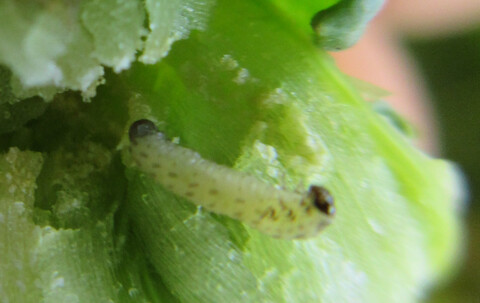
In this study, the host quality for cabbage stem flea beetle, Psylliodes chrysocephala (Coleoptera: Chrysomelidae), in four oilseed rape (Brassica napus) cultivars and seven other brassicaceous species with different glucosinolate profiles was assessed under controlled conditions. White mustard, which provides inferior host quality for larval development, has the potential to introduce insect resistance into high-yielding oilseed rape cultivars in breeding programmes.
February 2020
Mosquito phytophagy – sources exploited, ecological function, and evolutionary transition to haematophagy
- First Published: 13 November 2019
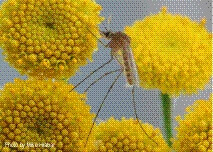
Phytophagy is a key element of mosquito ecology, and understanding it is critical to combat mosquito-borne diseases. Populations of even highly synanthropic mosquitoes may not be able to persist without phytophagy, even when vertebrate blood is readily available. In this review, we summarize the current knowledge about mosquito phytophagy and outline future research needs.
January 2020
Habitat factors associated with Fopius caudatus parasitism and population level of its host, Ceratitis cosyra
- First Published: 01 December 2019

The parasitoid wasp Fopius caudatus (Hymenoptera: Braconidae) and its fruit fly host Ceratitis cosyra (Diptera: Tephritidae) were present on the shrub Sarcocephalus latifolius (Rubiaceae) in the entire study area, yet their abundance could vary within small scale. We demonstrated that habitat factors such as cultivation level, tree, shrub, and herb coverage, and specific plant species affected the parasitoid’s parasitism. The results suggest that habitat factors might be manipulated to enhance parasitism in a conservation biological control approach.
December 2019
Mitochondrial DNA diversity and geographical distribution of sexual and asexual strains of the braconid parasitoid Meteorus pulchricornis
- First Published: 06 December 2019
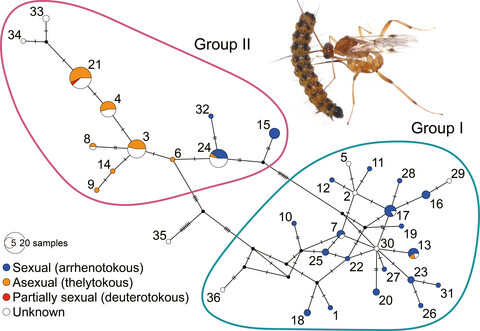
The parasitoid wasp Meteorus pulchricornis (Hymenoptera: Braconidae) exhibits sexual and asexual strains in Japan. A statistical parsimony network of mitochondrial COI haplotypes shows two main haplotype groups – one is virtually sexual, another contains most of asexual strains. An asexual strain recently established in New Zealand has the identical haplotype to a strain in Japan and was proven to have originated from East Asia. Three hypotheses on the evolution of asexuality are discussed for this parasitoid wasp: recessive gene, hybridization, and cytoplasmic element.
November 2019
Enantiomers of fuscumol acetate comprise the aggregation-sex pheromone of the South American cerambycid beetle Psapharochrus maculatissimus, and likely pheromones of the cerambycids Eupromerella plaumanni and Hylettus seniculus
- First Published: 22 October 2019
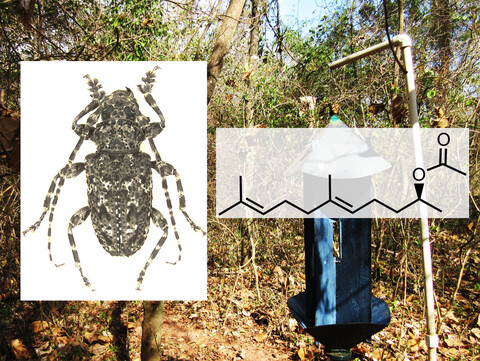
The male-produced aggregation-sex pheromone of the cerambycid beetle Psapharochrus maculatissimus (Coleoptera: Cerambycidae, Lamiinae) is composed of (S)-fuscumol acetate. The sympatric species Eupromerella plaumanni and Hylettus seniculus were specifically attracted to racemic and (R)-fuscumol acetate, respectively. Species in the cerambycid subfamily Lamiinae appear to manipulate the ratios of fuscumol acetate enantiomers to form species-specific signals.
October 2019
Preference of Bt-resistant and susceptible Busseola fusca moths and larvae for Bt and non-Bt maize
- First Published: 16 October 2019
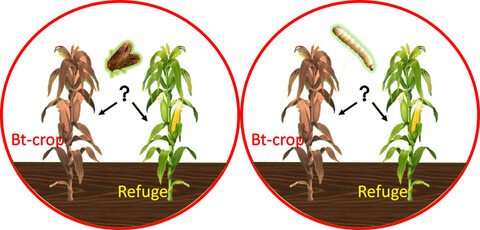
The insect resistance management (i.e., high-dose/refuge strategy) deployed to delay resistance evolution is grounded on assumptions about the biology and ecology of a pest species, for example, the interaction between the insect pest and crop plants. Busseola fusca (Lepidoptera: Noctuidae) moths of a resistant and susceptible population do not show differential oviposition preference for Bacillus thuringiensis (Bt) or non-Bt maize, but neonate larvae are able to detect Bt toxins and display feeding avoidance behaviour on Bt maize leaf samples.
September 2019
Associative learning in immature lacewings (Ceraeochrysa cubana)
- First Published: 04 August 2019
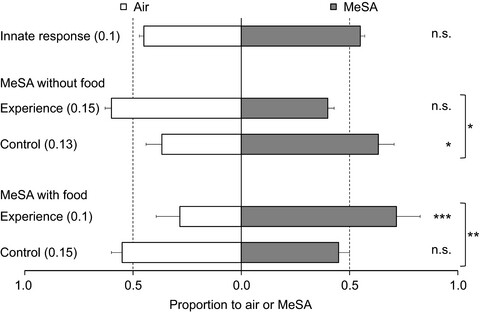
Whereas adults of the lacewing Ceraeochrysa cubana (Neuroptera: Chrysopidae) feed on plant-provided food and honeydew, larvae are voracious polyphagous predators of several insect pests, and therefore important for biological control. We show that the immatures can learn the association between a volatile cue (methyl salicylate) and the presence or absence of food and that they use this learned association when searching for new patches with prey.
August 2019
Delaying insect access alters community composition on small carrion: a quantitative approach
- First Published: 19 August 2019
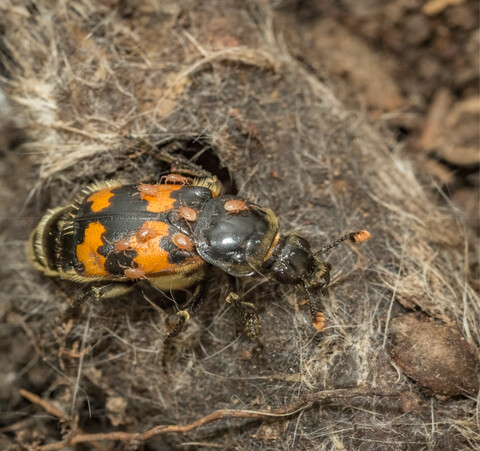
We manipulated the insect colonization of carrion in order to shift the initial colonization patterns of early-successional competitively dominant burying beetles (Nicrophorus sp.; Coleoptera: Silphidae) and blowfly larvae (Diptera: Calliphoridae) to investigate their effect on late-successional, competitively inferior insects. We found blowfly larvae to be the dominant insect group on carrion, with a mostly negative effect on other insect groups, including the presumed dominant burying beetles.
July 2019
Does experimental evolution produce better biological control agents? A critical review of the evidence
- First Published: 29 July 2019
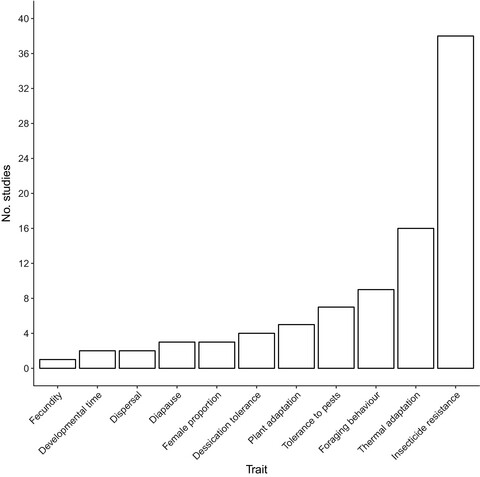
We review studies that used experimental evolution and/or artificial selection to improve native biocontrol agents and evaluated their success. Most studies focused on improving the performance of natural enemies in ecologically relevant environments, such as in the presence of pesticides or at different temperatures. Although most studies were poorly replicated, the selected trait generally improved following the selection process.
June 2019
Presence of Cry1Ab in the Bt maize – aphid (Rhopalosiphum maidis) – ladybeetle (Propylea japonica) system has no adverse effects on insect biological parameters
- First Published: 17 June 2019
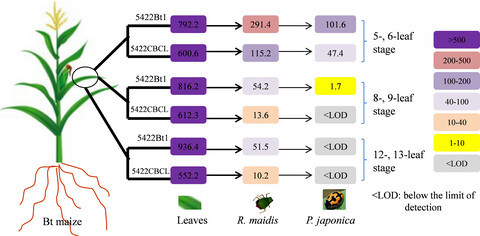
A tritrophic assay revealed a great dilution of Cry1Ab through the food chain of Bt maize leaves, the aphid Rhopalosiphum maidis (Hemiptera: Aphididae), and the ladybeetle Propylea japonica (Coleoptera: Coccinellidae). In a long-term assay (three generations), Bt maize expressing Cry1Ab had no negative effects on biological parameters of R. maidis. No unexpected prey-mediated acute lethal or sublethal effects of Cry1Ab maize were found on the predator P. japonica.
May 2019
Variability of photosensitive period and voltinism among populations of a butterfly, Ypthima multistriata, inhabiting similar latitudes and altitudes
- First Published: 19 June 2019
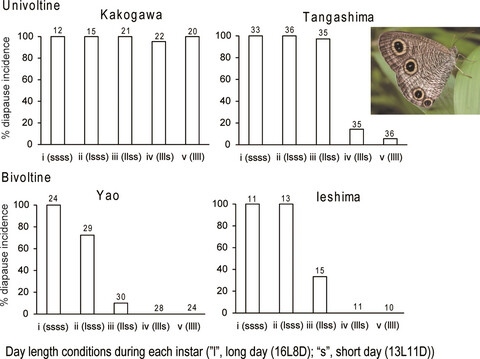
In the butterfly Ypthima multistriata (Lepidoptera: Nymphalidae), there are univoltine and bivoltine populations although they inhabit similar climate zones. We demonstrated that the photosensitive stage for direct development is earlier in bivoltine populations than in univoltine populations, which causes variation in voltinism. In addition, larvae of one univoltine population diapaused even under constant long-day condition.
April 2019
Pre- and post-ingestive defenses affect larval feeding on a lethal invasive host plant
- First Published: 18 March 2019
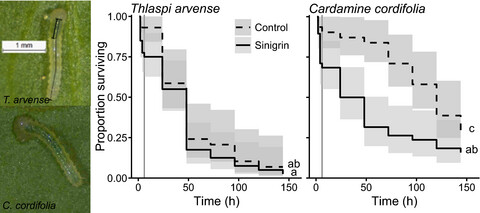
Pieris macdunnoughii (Lepidoptera: Pieridae) butterflies readily lay eggs on the invasive mustard Thlaspi arvense (Brassicaceae), which is lethal to their offspring. We show that larvae delay feeding, and once begun, feed more slowly on the invasive plant, but it is the delayed onset of feeding that causes neonate mortality. Sinigrin, the dominant glucosinolate produced by T. arvense, contributes to this deterrent effect and increases mortality when added to leaves of this butterfly's native host plants.
March 2019
Estimating costs of aphid resistance to parasitoids conferred by a protective strain of the bacterial endosymbiont Regiella insecticola
- First Published: 25 January 2019
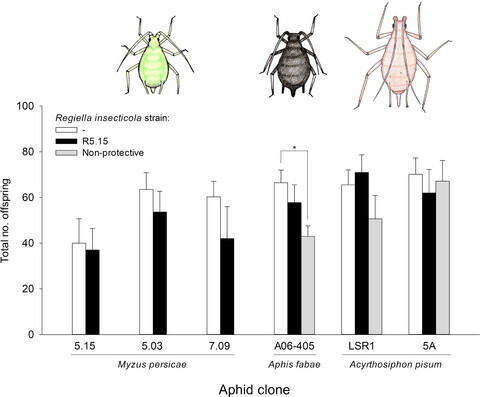
Heritable bacterial endosymbionts are common in aphids (Hemiptera: Aphididae). Their spread and persistence in host populations will depend on the net effect of costs and benefits they confer. Here we show that the strong protection against parasitoids provided by an unusual strain of the facultative symbiont Regiella insecticola comes at limited costs to the host, suggesting that this strain has a high potential for spreading in aphid populations.
February 2019
Effects of diet on female fecundity and larval development in the carrion beetle Necrophila japonica
- First Published: 25 January 2019

We examined female fecundity and larval development on various diets in Necrophila (Eusilpha) japonica (Coleoptera: Silphidae, Silphinae) with laboratory rearing experiments. Female fecundity was highest on the minced beef diet, simulating a vertebrate carcass, whereas larvae performed best on the earthworm diet, a model for predatory feeding on invertebrates. The results were compared to those of previous studies of this beetle species and discussed from methodological, ecological, and evolutionary perspectives.
January 2019
Effects of biodiversity in agricultural landscapes on the protective microbiome of insects – a review
- First Published: 23 January 2019
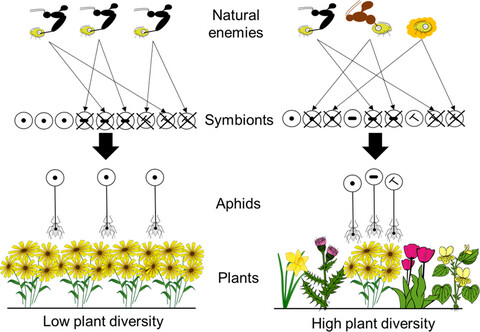
How the insect microbiome interactions are changed in response to the diversity of the food-web in which they are embedded is an emerging topic offering exciting research opportunities and potential application in sustainable agriculture. Although aphid symbionts have the potential to reduce biological control effectiveness through conferring protection for the host insect, increasing plant and natural enemy biodiversity can mitigate these effects.
November/December 2018
Quarantine host range and natural history of Gadirtha fusca, a potential biological control agent of Chinese tallowtree (Triadica sebifera) in North America
- First Published: 18 December 2018
October 2018
Measuring wood-boring depth of Arhopalus ferus and Prionoplus reticularis in Pinus radiata logs informs the development of phytosanitary treatments
- First Published: 12 September 2018
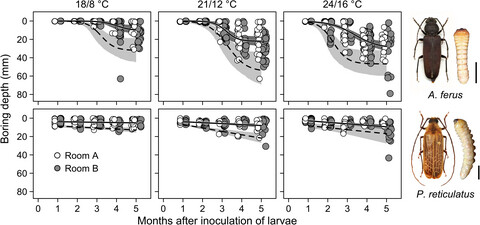
Boring depths differed significantly between Arhopalus ferus and Prionoplus reticularis (Coleoptera: Cerambycidae) and their rates of boring (penetration) into the sapwood were temperature dependent. Maximum larval boring depths of A. ferus and P. reticularis after 5 months occurred at 21/12 °C (day/night) and were 53.7 and 21.8 mm, respectively. Knowledge of the location of potential pest species permits the development of efficient alternative phytosanitary treatment schedules that target infested portions of export logs.
September 2018
Influence of larval density and dietary nutrient concentration on performance, body protein, and fat contents of black soldier fly larvae (Hermetia illucens)
- First Published: 03 September 2018

We investigated the effects of dietary nutrient concentration, larval rearing density, and their possible interaction on survival, development, growth, and nutritional composition of black soldier fly larvae (Diptera: Stratiomyidae). Main outcomes of our work are the interaction between larval density and dietary quality and the regulation of larval protein content within narrow limits.




